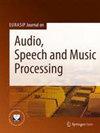Mi-Go:使用 YouTube 作为数据源评估通用语音识别机器学习模型的工具
IF 1.9
3区 计算机科学
Q2 ACOUSTICS
Eurasip Journal on Audio Speech and Music Processing
Pub Date : 2024-05-01
DOI:10.1186/s13636-024-00343-9
引用次数: 0
摘要
本文介绍的 Mi-Go 是一款工具,旨在评估通用语音识别机器学习模型在不同真实场景中的性能和适应性。该工具利用 YouTube 作为丰富且持续更新的数据源,考虑了多种语言、口音、方言、说话风格和音频质量水平。为了证明该工具的有效性,我们使用 Mi-Go 进行了一项实验,以评估最先进的自动语音识别机器学习模型。评估共涉及 141 个随机选择的 YouTube 视频。结果表明,YouTube 是评估语音识别模型的宝贵数据源,可确保模型的稳健性、准确性以及对不同语言和声学条件的适应性。此外,通过将机器生成的转录内容与人工制作的字幕进行对比,Mi-Go 工具可以帮助确定 YouTube 字幕的潜在滥用情况,如搜索引擎优化。本文章由计算机程序翻译,如有差异,请以英文原文为准。
Mi-Go: tool which uses YouTube as data source for evaluating general-purpose speech recognition machine learning models
This article introduces Mi-Go, a tool aimed at evaluating the performance and adaptability of general-purpose speech recognition machine learning models across diverse real-world scenarios. The tool leverages YouTube as a rich and continuously updated data source, accounting for multiple languages, accents, dialects, speaking styles, and audio quality levels. To demonstrate the effectiveness of the tool, an experiment was conducted, by using Mi-Go to evaluate state-of-the-art automatic speech recognition machine learning models. The evaluation involved a total of 141 randomly selected YouTube videos. The results underscore the utility of YouTube as a valuable data source for evaluation of speech recognition models, ensuring their robustness, accuracy, and adaptability to diverse languages and acoustic conditions. Additionally, by contrasting the machine-generated transcriptions against human-made subtitles, the Mi-Go tool can help pinpoint potential misuse of YouTube subtitles, like search engine optimization.
求助全文
通过发布文献求助,成功后即可免费获取论文全文。
去求助
来源期刊

Eurasip Journal on Audio Speech and Music Processing
ACOUSTICS-ENGINEERING, ELECTRICAL & ELECTRONIC
CiteScore
4.10
自引率
4.20%
发文量
0
审稿时长
12 months
期刊介绍:
The aim of “EURASIP Journal on Audio, Speech, and Music Processing” is to bring together researchers, scientists and engineers working on the theory and applications of the processing of various audio signals, with a specific focus on speech and music. EURASIP Journal on Audio, Speech, and Music Processing will be an interdisciplinary journal for the dissemination of all basic and applied aspects of speech communication and audio processes.
 求助内容:
求助内容: 应助结果提醒方式:
应助结果提醒方式:


